San Antonio Economic Indicators

April 23, 2021
The San Antonio Business-Cycle Index strengthened in March as first-quarter jobs posted robust performance, and the unemployment rate ticked down. Local consumer spending declined in mid-February due to Winter Storm Uri but has since remained above prepandemic levels. Home sales activity tanked in February, and the number of individuals currently hospitalized with COVID-19 continued to decrease after peaking in late January.
Business-Cycle Index
The San Antonio Business-Cycle Index—a broad measure of economic activity in the metro—increased at a strong, annualized 12.7 percent in March (Chart 1). The index’s recent growth is mainly due to healthy job gains in March and a lower unemployment rate.
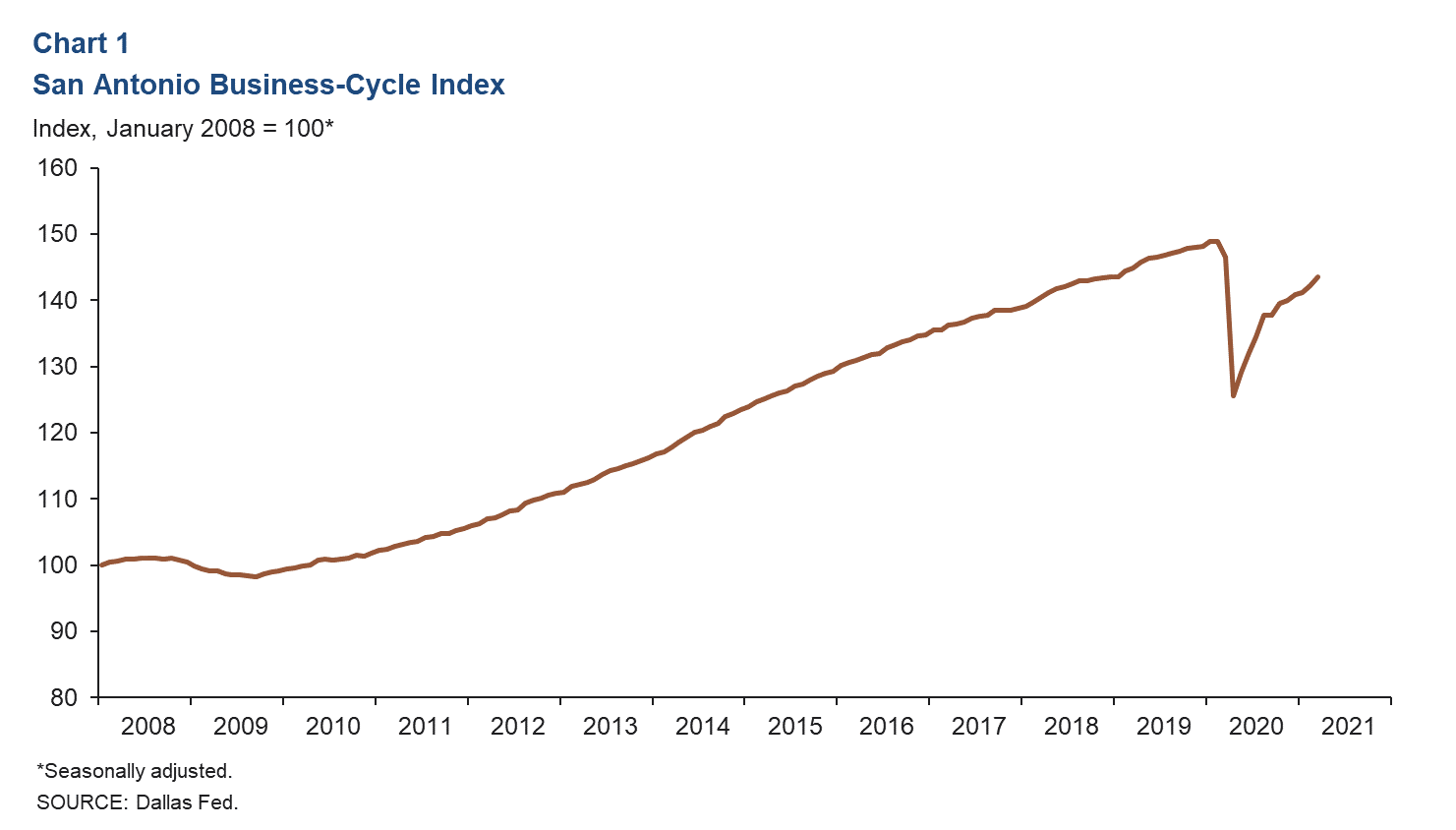
Labor Market
Unemployment Rate Ticks Down
The metro’s unemployment rate fell to 6.4 percent in March. The state’s unemployment rate remained at 6.9 percent, while the nation’s unemployment rate ticked down to 6.0 percent—the lowest since March 2020 (Chart 2).
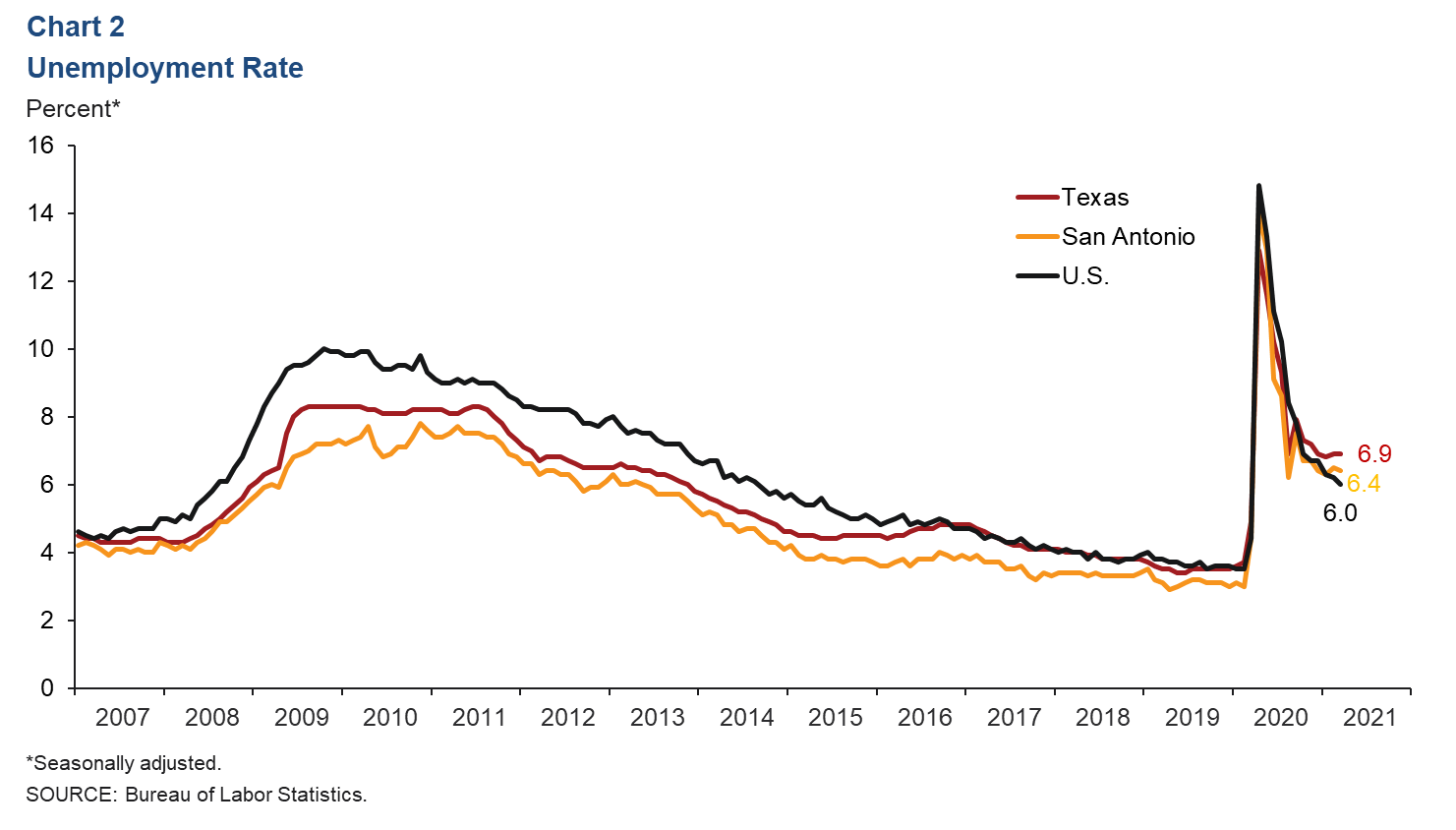
First-Quarter Job Growth Positive Across Sectors
Net payrolls in San Antonio grew an annualized 7.1 percent (18,050 jobs) in the first quarter, with positive performances across all industries (Chart 3). Mining (24.8 percent, or 360 jobs) led the growth and was followed by construction (15.9 percent, or 2,090 jobs), leisure and hospitality (13.1 percent, or 3,520 jobs) and professional and business services (11.9 percent, or 4,255 jobs). In March and April 2020 combined, 133,615 jobs were lost as the pandemic hit. As of March 2021, 76.6 percent of those jobs had been recovered.
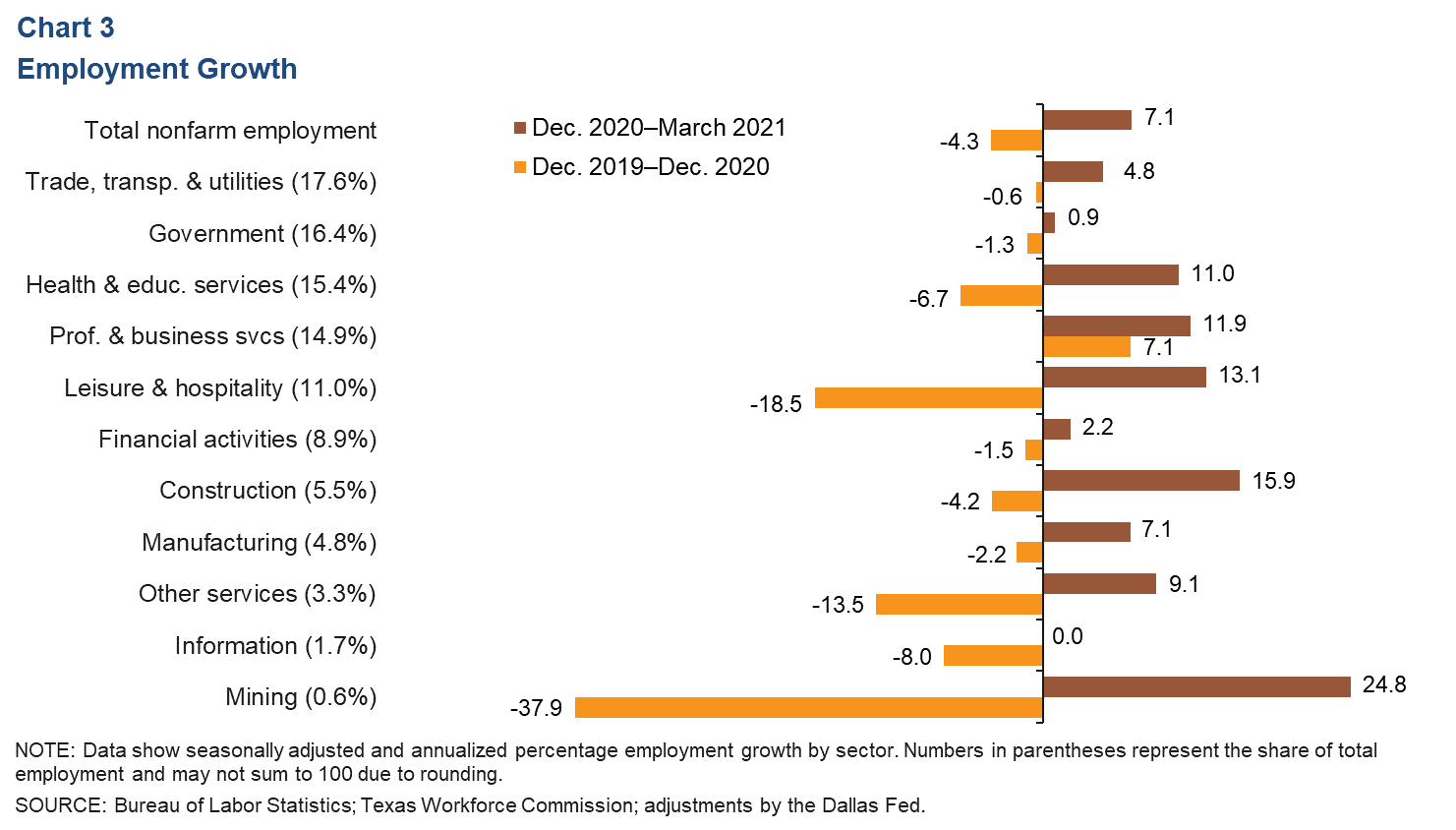
Consumer Spending
Since early February 2021, consumer spending has remained generally above January 2020 levels, except for the brief dip to below prepandemic levels during the week of Winter Storm Uri in mid-February. As of April 4, spending was up 11.5 percent relative to January 2020 in Bexar County and up 9.4 percent in the state (Chart 4).
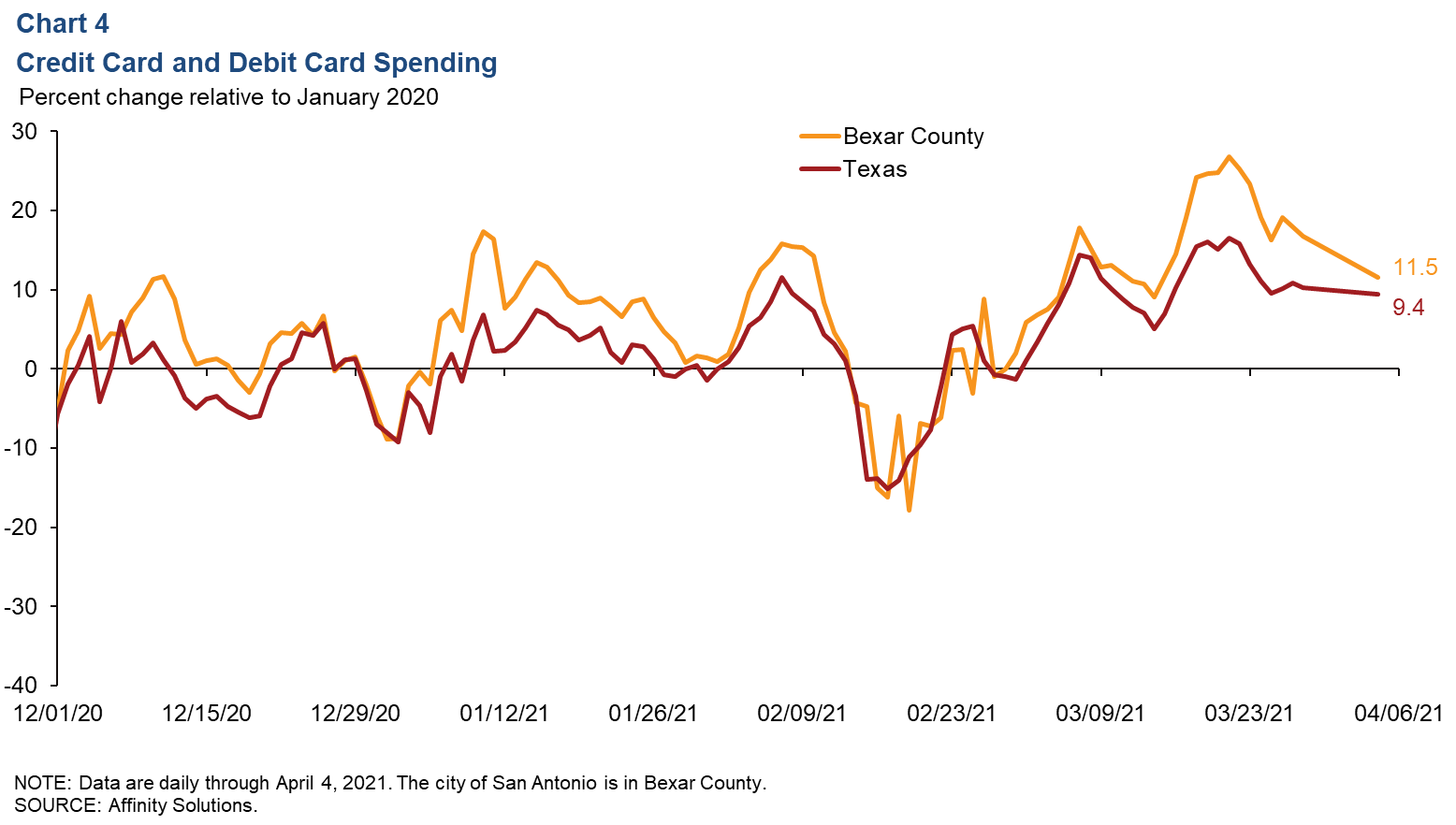
Real Estate
Existing-home sales in February contracted 19.5 percent in San Antonio and 3.8 percent in the state, in part due to the winter storm (Chart 5). In 2020, the metro’s home sales were up 11.4 percent from 2019—the largest year-over-year increase since 2014 and slightly above the state’s 9.7 percent growth. The median price of homes sold in February was $269,000 in the metro; this was a 13.8 percent increase year over year—the highest rise in 17 years. In Texas, the median home price in February was $282,004, a 15.3 percent jump from the previous year.
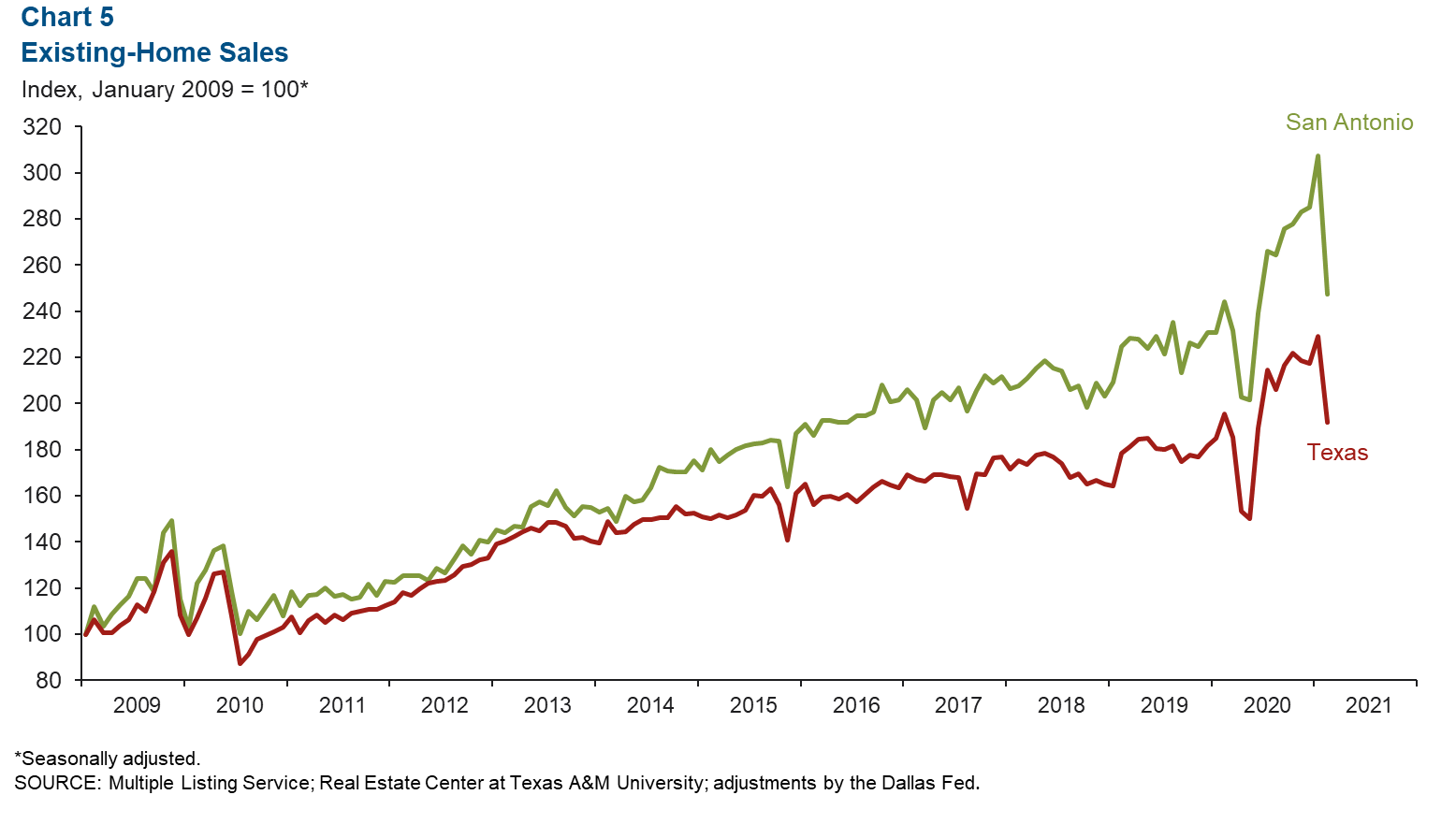
COVID-19 Hospitalizations
With the exception of a slight increase over the past few weeks, the number of people currently hospitalized with COVID-19 in San Antonio has been on a steep decline since peaking at 1,661 on Jan. 25 (Chart 6). In Texas, the number hospitalized peaked at 13,977 on Jan. 17. As of April 19, the numbers were 245 in San Antonio and 2,922 in Texas.
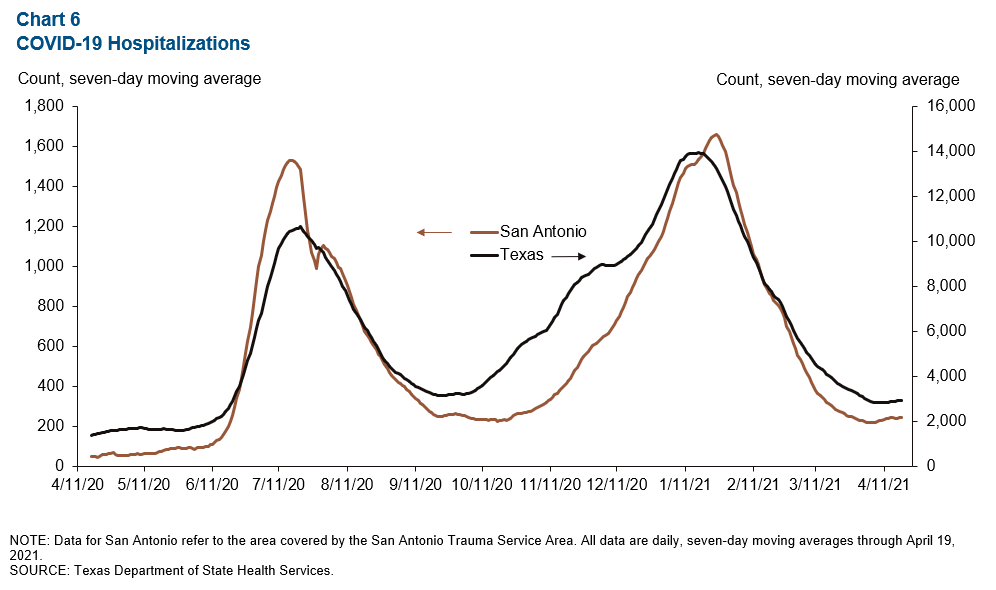
NOTE: Data may not match previously published numbers due to revisions.
About San Antonio Economic Indicators
Questions can be addressed to Judy Teng at judy.teng@dal.frb.org. San Antonio Economic Indicators is published every month during the week after state and metro employment data are released.